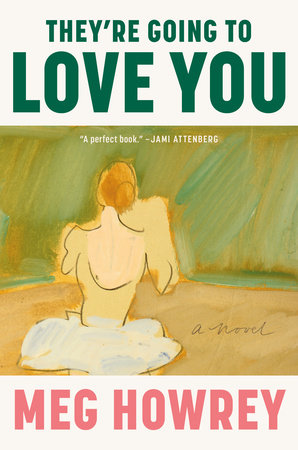They’re Going to Love You: A Novel
- By Meg Howrey
- Doubleday
- 288 pp.
- Reviewed by Terri Lewis
- December 21, 2022
A young woman grapples with ballet and her complicated family.

The world of ballet is seductive to writers — the costumes and display, the jealousies and competition — but it is a rare author who can capture the spare core of that world: the daily class. Meg Howrey, who once danced with an elite company, manages it beautifully, beginning her new novel, They’re Going to Love You, with physicality and concentration.
James is teaching, “not demonstrating technical perfection; he is middle-aged and wearing sneakers. He’s demonstrating intention.” Under James’ instruction, Alex, newly professional and insecure, realizes for the first time how “he might make something…with his body which is not perfect, and his mind, which is a total shitshow.”
The scene is narrated by the novel’s main character, Carlisle, but she’s not in the class. Rather, James has told her about it. She (and the reader) won’t encounter Alex again for another 150 pages; when he reappears, lives will change.
This opening clarity and inner life run throughout the novel, which is told in alternating chapters following Carlisle first as an aspiring young ballerina with ecstatic visits to James and her beloved father, Robert, and then as a fortysomething struggling choreographer who hasn’t seen either man for 19 years. When James calls to say her father is dying, he also understands if she doesn’t want to come. Arriving at this breach and its effects form the heart of the story.
When Carlisle was growing up, she visited Manhattan several times a year, staying with Robert, an administrator for a well-known dance company, and James, his lover. At 10, she learned her father was gay. Her grandmother always said when Robert married Carlisle’s mother, the family didn’t realize he was “one of those. I mean, he could talk about regular things and play bridge.”
The child Carlisle finds her own meaning. “I’m not perfectly clear about the word gay…I’ve heard my mother use the word homosexual, without emphasis or judgment, and my maternal grandmother with audible italics,” she reflects. “I think homosexual means unmarried or possibly theatrical, like many of the people I see in New York.”
This knowledge is followed, in a devastating scene, by her first awareness of AIDS. However, unlike in Rebecca Makkai’s The Great Believers, the illness doesn’t take center stage here; it rumbles in the background, emphasizing the precariousness of Robert and James’ love.
Of course Carlisle wants to be a ballerina — both her parents danced professionally — and as a thinker, she closely observes her journey. “Between 12 and 14, ballet can become your identity, thank god. The alternative is adolescence. Ballet, at least, has rules you can understand.”
As Carlisle works toward her goal in schools that rise in quality, the reader sees her ambition but also the fairytale she constructs around ballet, around her visits to Robert, and most particularly around James, who treats the girl as a confidant (and with whom she’s half in love). She’s invited to the summer session of the School of American Ballet, the pinnacle of her hopes, but when she’s not asked back for the fall — she’s too tall — she panics, unable to imagine a future. She tells herself she didn’t become as good a dancer as she was meant to be because she wasn’t as good a person as she was meant to be.
The novel’s alternate sections begin with James’ phone call: Carlisle’s dying father wants to talk to her. As she struggles with her feelings, she goes about the life she’s cobbled together in California after failing in New York, choreographing for puppets, TV shows, and opera, with an occasional life-affirming job with a ballet company. Gone is the dreamy girl; she’s become a realist: “Classical ballet doesn’t traffic in your bullshit.”
It’s not until the two timelines meet more than halfway through the book that the reason for the family’s rupture becomes clear. Here, the tenor of the book changes slightly; there are betrayals, secrets, and a brush with death. Amid the fallout, Carlisle struggles with her decisions and begins to find her way.
Although firmly set in ballet’s milieu, this is a story of relationships, of families that are formed and destroyed and repaired. Specifically, it’s a story of Carlisle’s relationship with her parents — she connects with her mother only late in the novel — with James, with her art, with her one close friend, and eventually with a lover. These bonds shift as she matures and processes them.
However, the relationship between James and Robert is the most touching. Never flaunted, it unfolds in the little moments Carlisle observes both as a child and as an adult. A quick kiss on the hand after a tense moment at a party. Robert ironing a shirt for James. James saying, “He’s my life. And I’m his.” Their love is real and sustaining.
Readers expecting performances or costumes or the pageantry of ballet will be disappointed with They’re Going to Love You. Others will be rewarded by the deep dive into the forming of a dancer and by the reminder of how, even in failure, the lessons learned illuminate a life. This is a beautiful book.
Terri Lewis was a professional ballet dancer in Denver and Germany before she became an aspiring writer. She lives with her husband and two dogs and has just finished a novel exploring theatrical ambitions and compromise.

